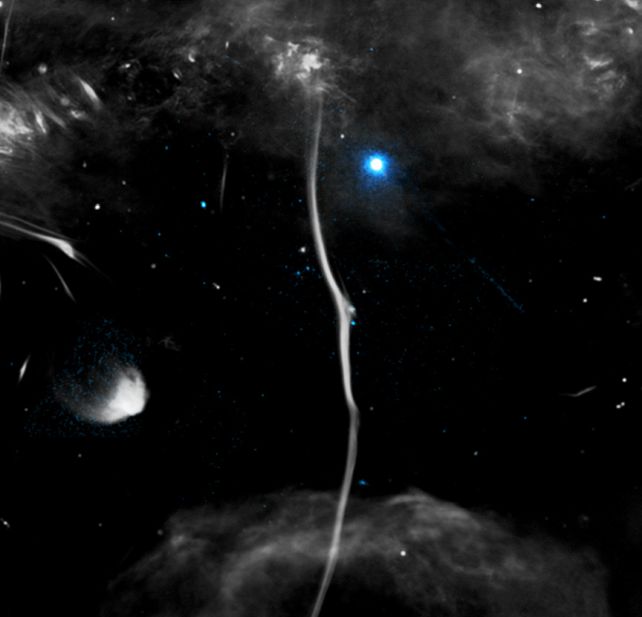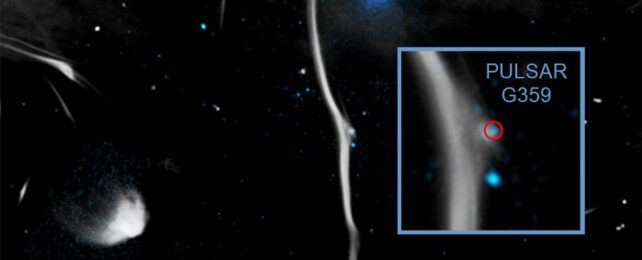The culprit in a cosmic hit-and-run that resulted in a broken 'bone' has been found out.
Of course, it's not actually a bone at all, but a mind-blowingly huge filament in the center of the Milky Way galaxy, known as the Snake, extending for a length of 230 light-years. One of the interesting things about this filament is that it's relatively smooth – except for two prominent kinks, or "breaks".
The origin of the fractures in the Snake (G359.13) was something of a mystery; observations using the Chandra X-ray Observatory and the MeerKAT radio telescope revealed the culprit of one of them.

Zooming in on one of the fractures identified a prominent point-like source of X-rays and radio waves. A team of astronomers, led by Farhad Yusef-Zadeh of Northwestern University in the US, thinks it could only be a radio pulsar that punched through the filament at an absolutely breakneck velocity of between 500 and 1,000 kilometers (310 to 620 miles) per second.
This, believe it or not, is not unheard-of for pulsars. That's because pulsars are dead stars – the collapsed cores of massive stars that have reached the end of their lifespan and sneezed off their outer material in a violent supernova. The core of the star, no longer supported by the outward pressure of fusion, collapses under gravity to form a neutron star that, when it pulses with light, we call a pulsar.
If this supernova is lopsided, the neutron star can be booted unceremoniously across the galaxy at high speeds, something astronomers call a natal kick. The famous cannonball pulsar is thought to have received a natal kick; and other high-speed stars show just how powerful this blow can be.

We don't know the origin of the pulsar smashing through the Snake, but it seems to be doing so with quite some force. The filament is made of magnetic fields, along which spiraling particles are accelerated, causing the filament to glow.
Around the fracture, the radio emission glows more strongly, suggesting that the force of the blow warped the magnetic field, distorting the radio signal. Meanwhile, an enhancement in X-rays near the pulsar is consistent with accelerated electrons and positrons.
The cause of the second, smaller fracture is yet to be determined. There is also more to discover about the pulsar. If it's traveling fast enough, it may some day leave the galaxy. But since it's in the galactic center, some 26,000 light-years from us, it has a long road ahead of it.
A paper describing these findings was published in May 2024 in the Monthly Notices of the Royal Astronomical Society.
